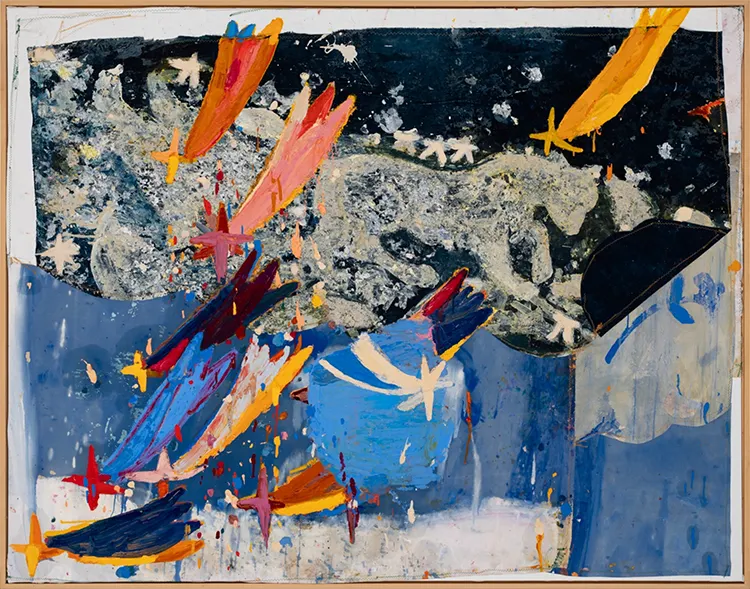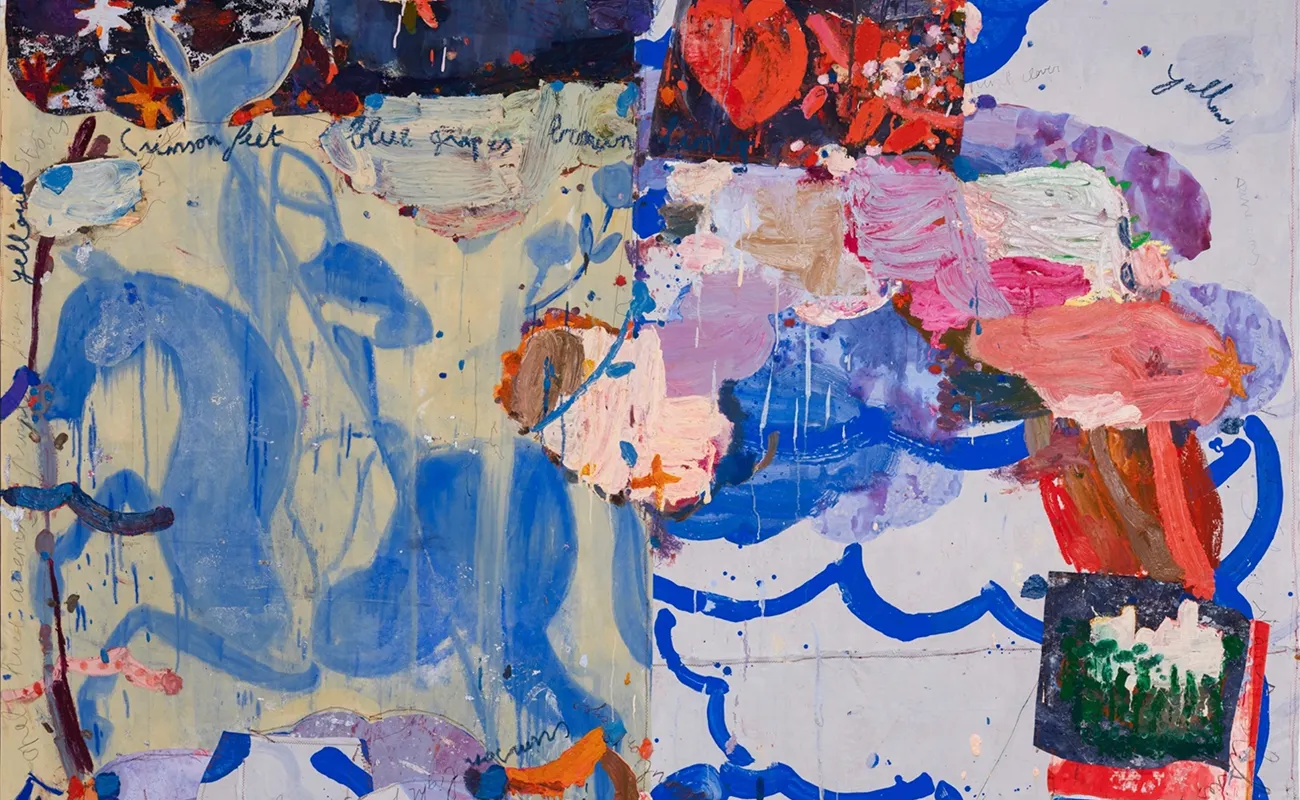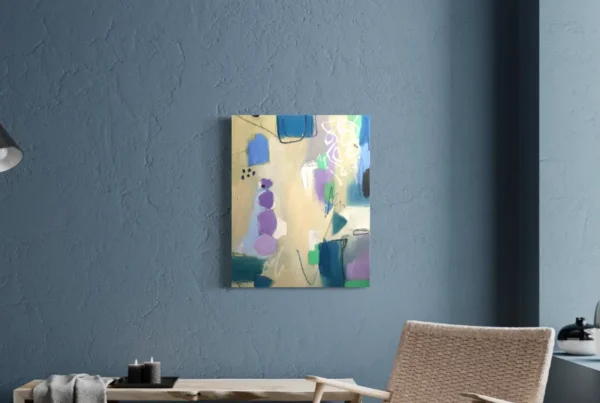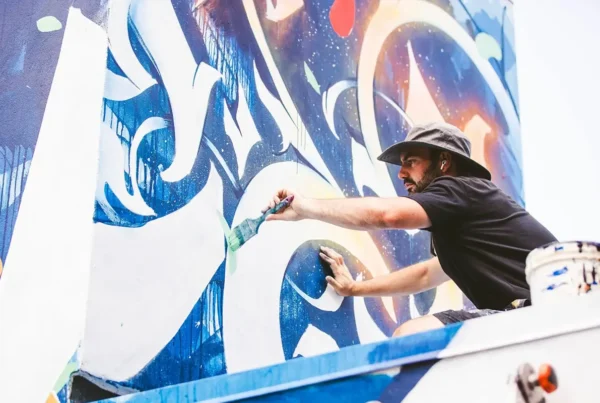A Visual Language Beyond Words
Gommaar Gilliams’ work occupies a unique space between abstraction and figuration, blending gestural expressiveness with deeply rooted symbolism. Influenced by a wide spectrum of artistic traditions, from American Abstract Expressionism to medieval European tapestries and Middle Eastern iconography, his paintings create a dialogue between past and present. His approach is not merely aesthetic but conceptual—his canvases act as bridges between cultures and eras, weaving together visual storytelling traditions that transcend time.
Rather than adhering strictly to one style, Gilliams embraces a layered, intuitive process that mirrors the complexities of memory and myth. His paintings often feature recurring motifs—celestial bodies, animals in motion, watchful figures—that evoke archetypal narratives spanning different cultures. Through his work, he explores how images gain significance across generations, becoming part of a shared cultural memory. Each painting invites the viewer to step into a space where history, personal reflection, and imagination intertwine.
At the core of Gilliams’ practice is a fascination with how stories endure and evolve. His technique reinforces this concept, as he builds surfaces through a meticulous layering of materials—soaking fabric in acrylic paint, obscuring it with oil, scraping, stitching, and collaging. The result is a fresco-like texture that suggests both permanence and transformation. By merging tactile physicality with symbolic imagery, Gilliams creates paintings that feel like artifacts from an undefined time, resonating with both nostalgia and contemporary sensibilities.
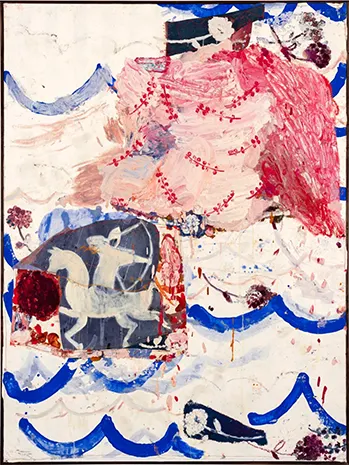
Rose with Me
2024
acrylic on painted fabrics,
200x150cm
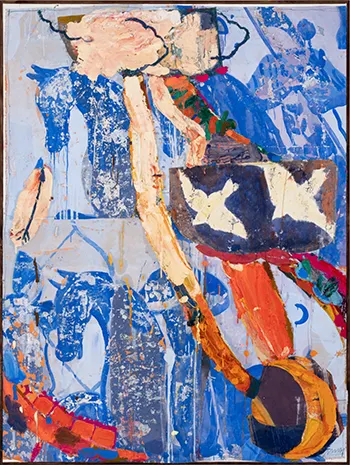
Wave upon Wave
2024
oil, oil pastel, acrylic on painted and stitched fabrics,
200x150cm
Gommaar Gilliams: Constructing Layers of Meaning
Each of Gilliams’ paintings is an intricate composition of accumulated marks, textures, and images—what he describes as a “visual palimpsest.” His process begins with an unconventional foundation: soaking fabric in acrylic, allowing pigment to seep into the material rather than merely resting on its surface. This technique establishes a sense of embedded history, a base upon which he constructs further layers using oil paint, oil sticks, and collage elements. By alternately concealing and revealing, he creates a dynamic interplay between presence and absence, echoing the way memories are formed, altered, and reinterpreted over time.
The artist’s choice of imagery reinforces this theme. Motifs such as crescent moons, foxes, and castle-like structures appear repeatedly, carrying a sense of folklore and collective memory. These symbols are never fixed in meaning; instead, they invite viewers to project their own associations onto the work. A fox, for instance, might embody cunning in one culture and comfort in another, while a moonlit landscape can evoke mystery or serenity, depending on one’s perspective. By working with such fluid symbolism, Gilliams fosters a deeply personal yet universal experience.
This duality extends to the emotional resonance of his paintings. His works often exist in a space between nostalgia and dreamlike ambiguity, where familiarity is intertwined with the unknown. The paintings are neither entirely figurative nor wholly abstract—they resist classification, existing in a liminal state where past and present, material and immaterial, converge. This balance of contrasts imbues his work with a dynamic energy, ensuring that no single interpretation can fully contain its meaning.
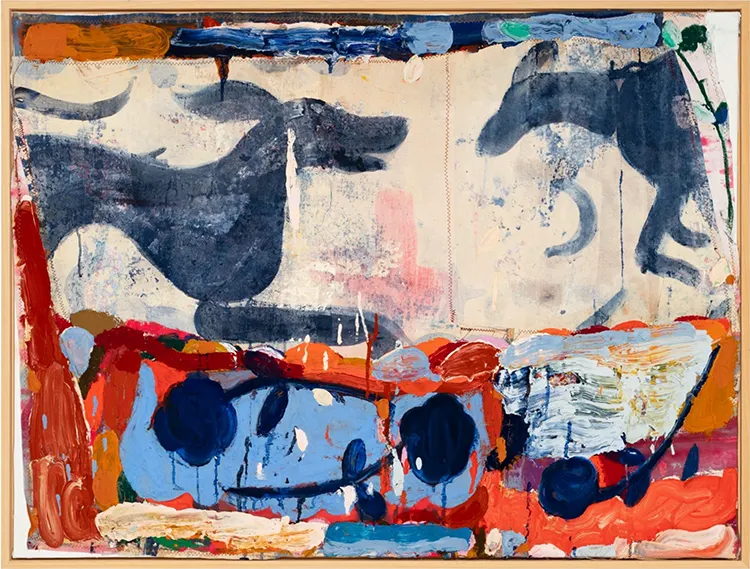
The night around me
2024
oil, oil stick, acrylic on painted and stitched fabrics
90x120cm
Textures of Time: The Tactile Presence of Gilliams’ Paintings
Gilliams’ artistic philosophy is not confined to imagery alone—his paintings possess a distinct physicality that enhances their conceptual depth. The layered construction of his works makes them feel almost sculptural, as if time itself has left its imprint on the canvas. This interest in texture stems from a desire to make his paintings more than just images; he envisions them as objects with presence, akin to frescoes or woven tapestries that bear the weight of history.
His techniques contribute to this aged, tactile quality. After the initial dyeing process, he applies oil paint and oil sticks, often scraping away layers to expose underlying traces. This method mirrors the way memories surface and fade, revealing glimpses of past iterations beneath the latest marks. Collage elements, such as stitched fabric, further emphasize the physicality of his work, making each piece a constructed artifact rather than a flat surface.
By engaging with these material processes, Gilliams challenges traditional notions of painting. His works do not merely depict—they embody. The textured surfaces, rough and refined in equal measure, suggest paintings that have endured the passage of time, as though they have been unearthed from an ancient past while simultaneously speaking to contemporary concerns. In this way, his art operates on multiple levels, merging materiality with metaphor, creating works that invite both tactile engagement and introspective reflection.
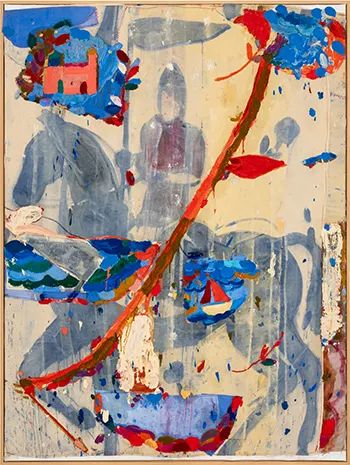
A Thousand times
2024
oil, oil stick, acrylic on painted and stitched fabrics
200x150cm
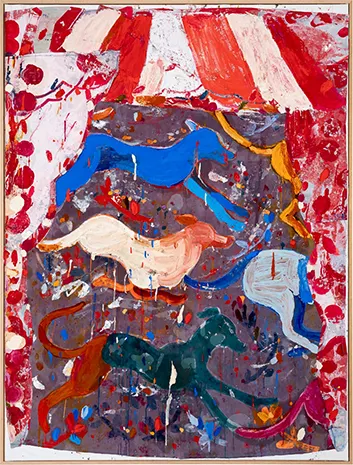
Land of story
2024
oil, oil stick, acrylic on painted and stitched fabrics
200x150cm
Gommaar Gilliams: Nostalgia, Myth, and the Unfinished Story
The emotions embedded in Gilliams’ work are deeply tied to nostalgia and longing—not just personal, but collective. He views nostalgia as a universal condition, an ever-present yearning for something just out of reach. His 2018 exhibition Jenny Kissed Me explored this idea through the lens of childhood memory, evoking the fleeting innocence of early experiences. Similarly, Always Been Told (2020) and If You Were Dreaming (2021) delved into inherited narratives, reflecting on how myths and folktales shape identity across generations.
This focus on collective memory aligns with his broader artistic vision. His work does not impose rigid narratives; instead, it invites viewers to connect with their own histories and emotions. Each painting functions as an open-ended story—one that shifts in meaning depending on the individual’s interpretation. Gilliams prefers this ambiguity, allowing the paintings to serve as mirrors for personal reflection rather than definitive statements.
Looking ahead, he remains committed to expanding his practice, continuously seeking new ways to push the boundaries of painting. His recent explorations consider how his work might extend beyond the canvas, incorporating sculptural or architectural elements. However, at its core, his art will always center on the layering of time, memory, and storytelling. For Gilliams, painting is not just a medium—it is a way of navigating the complexities of existence, a language that transcends words and lingers in the mind long after the viewer has stepped away.
